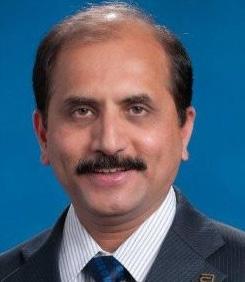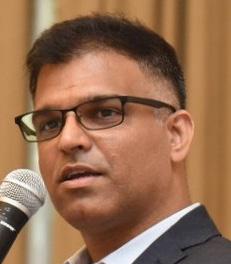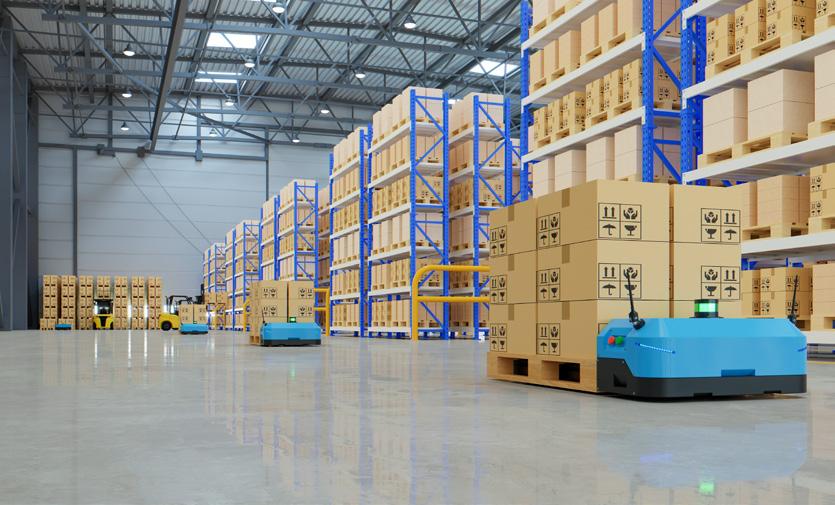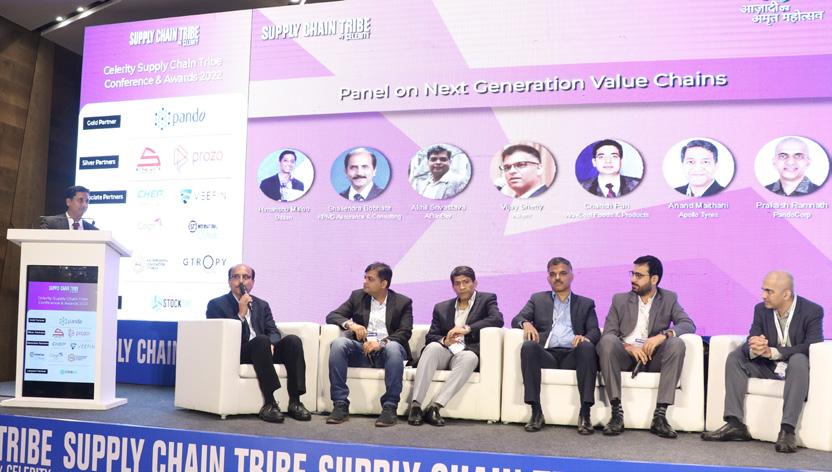
11 minute read
PERSPECTIVE
Next Generation VALUE CHAINS
China’s stringent policies during Covid left manufacturing high and dry globally. Indian manufacturers are integrating new technologies, throughout their operations to become agile, flexible, become cost competitive and responsive to customers in tune with the fast-changing global business dynamics. Our panel discussion, ‘Next Generation Value Chains’ hosted during Celerity Supply Chain Tribe Awards event, deep dived into Indian manufacturers’ strategies and stance to seize the opportunities and make India the next Manufacturing Hub of the world. Excerpts…
Advertisement
Shailendra Bobhate, Sr Advisor, KPMG Assurance & Consulting
Vijay Shetty, VP - Supply Chain, Alkem



Charish Puri, Head – Service Business, WayCool Foods & Products Pvt. Ltd.
Himanshu Maloo, Senior Supply Chain Leader, Udaan



“Till few years back, the famous adage, ‘Change is the only Constant’, used to hold true for all of us. But today, Change is also Changing so fast, even that hasn’t remained constant anymore. We have seen supply chains moving from one extreme to the other extreme, owing to fast-changing customers’ expectations, business needs and new age technology advancements. All these factors are transforming supply chain into a value chain for an organisation. A disruptive and distinctive supply chain is a true business enabler in today’s times. The onset of Covid-19 pandemic has even multiplied the importance of supply chain in driving a business’ success, which was not only the discussion point at the respective corporates’ boardroom but became the dining room conversations of every household. When everything was shut and everything was a chaos, the only thing that was running the world was supply chain,” with such a strong statement, the moderator of the session,
Himanshu Maloo – Senior Supply
Chain Leader, Udaan, steered the freewheeling conversation. importance for the organisations – just to keep getting profits from the existing business models or do they still need to work towards innovations which may not be profitable from the word go?
Akhil Srivastava, Director BU South
Asia, AB InBev: That’s a brilliant question. I would ask everyone in my team to make profit today itself so that we can fuel the new business model tomorrow. A classic case in point is ITC which has diversified into an assortment of products & services categories. They could do that on the back of a strong financial muscle which they were able to pump into newer business entities and grow from scratch. Yes, we need both. Let me deep dive into Innovation & Change because that’s very important in terms of business model. I would like to bring to you the analogy of the clock, which has two arms – one is for Change and other is for Innovation. Both arms need to run fast because the clock is moving forward, otherwise companies will not be able to disrupt the businesses. There will be passive inertia to change. But that’s to me is a whitewash. However, there are some companies such as Apple who just believe in constant innovation. Change needs to have three factors embedded into it – Solve a real consumer-centric problem; Solve a problem which is scalable; and Solve it profitably, if not today but for the future.
How are companies keeping customers at the center while designing their next generation value chains?
Shailendra Bobhate, Sr Advisor,
KPMG Assurance & Consulting: It’s no brainer that the customer has to be at the center. Before we are supply chain professionals, we are also customers ourselves. Companies who haven’t been able to be attuned to the changing customer demands have perished and Covid-19 pandemic has been a great witness to that. I am quite intrigued and inspired by the quote of a fellow panelists, ‘It’s not the corporates that compete, it’s their supply chains competing in the marketplace.’ Once your brand becomes commodity, your supply chain efficiency defines the future & fortune of the brand. In order to make this vision a reality, customer centricity is and will always remain the key. I would really like to emphasize on one very critical factor and that is accepting constant feedback from your customers and acting upon it. If companies fail to do so, they will not
only lose customers’ trust, but will lose the ultimate game.
How are companies leveraging the technology to outgrow the competition?
Vijay Shetty, VP - Supply Chain, Alkem:
The technology tools used to manage and optimize the supply chain have not changed significantly for decades, however in the new VUCA world, the scenario is consistently changing and during the pandemic, we saw many organizations leveraging technologies to their advantage. At Alkem Laboratories, for our Branded business, we developed a technological tool (portal) for our Distributors called “Alkem MarketPlace”, which enabled our 5000 plus distributors to order digitally. During the pandemic when India was under lockdown for more than 18 months, our Distributors had the flexibility to place Alkem orders using the internet.
On an average in a month, we receive over 1 lakh orders out of which, 65-70% orders are processed digitally through “Alkem MarketPlace” portal. Like other organisation, last week of the month, we typically book 50-60% of our sales. “Alkem MarketPlace” initiatives have significantly reduced efforts of order processing time for our Depot personal and also improved speed of executions for every order at our dispatch location.
Alkem is currently embarking on the journey to Digitize the entire Order to Cash processes. We are constantly looking at building an agile solution for our business and distributors using technology capabilities like AI/ ML to optimise our process. “Alkem MarketPlace” Portal will continuously be upgraded from time to time, where our distributors could place order using WhatsApp solutions or we may integrate with their ERP systems. Once we integrate our TMS & WMS systems into the Alkem MarketPlace portal, our distributors will have complete status and visibility of their orders till it is reaches their destination. I truly believe that technology is shaping and helping supply chain professionals to lead the way.
Charish Puri, Head – Service Business,
WayCool Foods & Products Pvt. Ltd.: I would like to draw your attention to the current national obsession of 10 minutes delivery. To understand this, let’s divide the supply chain into three parts. Talking about the front part of the value chain, the quick commerce companies are changing the consumers’ behavior with the expectation of promising 10 minutes delivery. As a service provider to these companies, we have to ensure that their dark stores are always filled with the right quantity as per the desired shelf life. Fresh products have the shelf life of few hours unlike any other product. We have to ensure their fill rates are high and replenish them faster that they are always at the delivery points. When it comes to the middle of the value chain, at the operations level, these produce by their very nature start getting deteriorated because of the moisture loss when they out from the field. We have to deploy the required storage systems with an aim to deliver these products in the freshest possible condition with a commitment to take care of any potential fluctuations at the back end. This is exactly where the value chain is playing the role. At the back end, we are connecting directly with the farmers by reducing 7-10 intermediaries to ensure minimum touchpoints. In turn, this value chain is able to offer better visibility to farmers and even better realisation of their produce.
Prakash Ramnath, VP & Head - Global Marketing, PandoCorp: I would like to take a macro-perspective on the same. Today, businesses are leveraging the value chain to outgrow the market. Fundamentally, companies can expand

their product portfolio and expand into new markets, or they can look at increasing the revenue per customer. Earlier, companies used to have related or an unrelated diversification, which used to be time consuming. Today, with acquisitions, it’s much faster. The other trend that we are witnessing is that both the forward and backward integration is still in place to build competency. Companies are working towards making value chain their core competency or a competitive advantage to serve multiple customer segments. The third trend that is mostly witnessed in the US and the European markets where most organisations are looking to move to an outsourced fulfilment model to achieve an end-to-end value chain. There is a clear trend where a lot of outsourced fulfilment services with technology are coming into place. Most companies are also realising that in a group company, multiple businesses are being run independently are embracing a Centre of Excellence model for different functions such as procurement, being like a shared services unit across multiple businesses where some capacity sharing can help drive companies effectively to out outgrowth the market.
What credentials and skillsets that you foresee our future supply chain leaders must have? Akhil Srivastava: The biggest catalyst of change in supply chain is People. Today’s supply chain managers are the agents of change in terms of bringing people together. Supply chain today has become the business fulcrum with around 43 out 100 companies having the core competency in supply chain, which never used to be the case earlier. Some of the biggest global conglomerates are backed by exceptional supply chains. People within this domain need to be upskilled as we move ahead and we must always remember that low skills and higher challenges will lead to anxiety, while high skills and low challenge will lead to boredom. I am sure none of us would like to be in any of the situations. The last two years have given us the ample reasoning to get going and innovate to sustain the businesses for the long term. It was a resilient supply chain and people like us who made this amazing achievement possible in the toughest times. Such confidence can only come when we are updated with the best-in-class solutions and bring that differentiating factor to drive efficient supply chains. We are like the sponge who need to absorb the shocks in the most subtle way. This analogy very well explains the importance of Learning, Relearning and Unlearning to drive businesses forward in good times and in bad. Moreover, the pace of learning also needs to be faster. The concept of instant gratification and understanding the consumer centricity is what supply chain leaders need to learn. I believe this is the last nugget missing for us. If we are able to do it, the channel is already there.
Shailendra Bobhate: The last 2.5 years were even more challenging for pharma and essential goods companies where despite the lockdown, they had to ensure consistent supplies of essential medicines. Those times really tested our abilities to get out of our comfort zones and survive because failure was not the option at all. Proactive thinking during such times really aids companies in taking some breakthrough decisions. Supply chain teams quickly got together and designed customer-centric supply chains. A supply chain professional lies right at the center point – between the corporates and the customers where both the parties have their peculiar requirements from us. On one hand, the corporates want profit from us, while on the other hand, the customer wants quality products at the lowest costs. A great supply chain professional really needs to know the balancing act and work towards ensuring win-win situation for both the parties. Supply chain professionals need to possess thorough understanding of finance. They need to have the right mindset to achieve the desired results, which can stem from proactive thinking. The next step is preparing ourselves for contingencies. Next gen supply chain leaders also need to have project management skills as we work on many projects all the time.
How can consumers benefit from next generation value chains? Vijay Shetty: Our Consumers’ preferences are constantly changing due to the influence of digital sales channels. Today’s customers value instant access to information and high level of service. We have many examples from the e-commerce industry and some of the logistics startups on how consumers have benefited with their offerings.
From a B2B model perspective, there are ample of opportunities in supply chain to collaborate with our Customers, Suppliers and Service providers to automate human efforts using new innovative technologies. It is important for the Supply Chain Leader to have short and long terms roadmap on the next generation value chain and constantly keep challenging the status quo of the operations model considering the changes in the customers’ preferences.
New technologies will always help, provided you have a capable team to make the best use of the same. Significant benefits could be achieved with the next generation value chain for our stakeholders, provided we have supply chain leaders who are able to sail the boat in the right direction. They should be able to take difficult decisions during adverse scenarios. Supply chain professional should behave like an entrepreneur. Challenging the status quo is extremely important.
Charish Puri: If you look at the food industry, which is contributing close to 20% to the country’s GDP, 30% of the food gets wasted in the value chain every year, which is more than the consumption of any small country such as Brazil. Way Cool Foods is building a tech-enabled platform, which will analyse the demand patterns of food products. With the help of ML, we are able to better speculate the demand, which can be passed on to the farmers so that there is demandsupply balance, and we are able to reduce the wastage as much as possible. In all these, farmers are ultimately getting profitable, wastage gets reduced, the produce reaches the consumers on time. Technology is the solution to reach to the masses.



